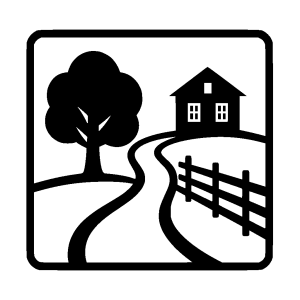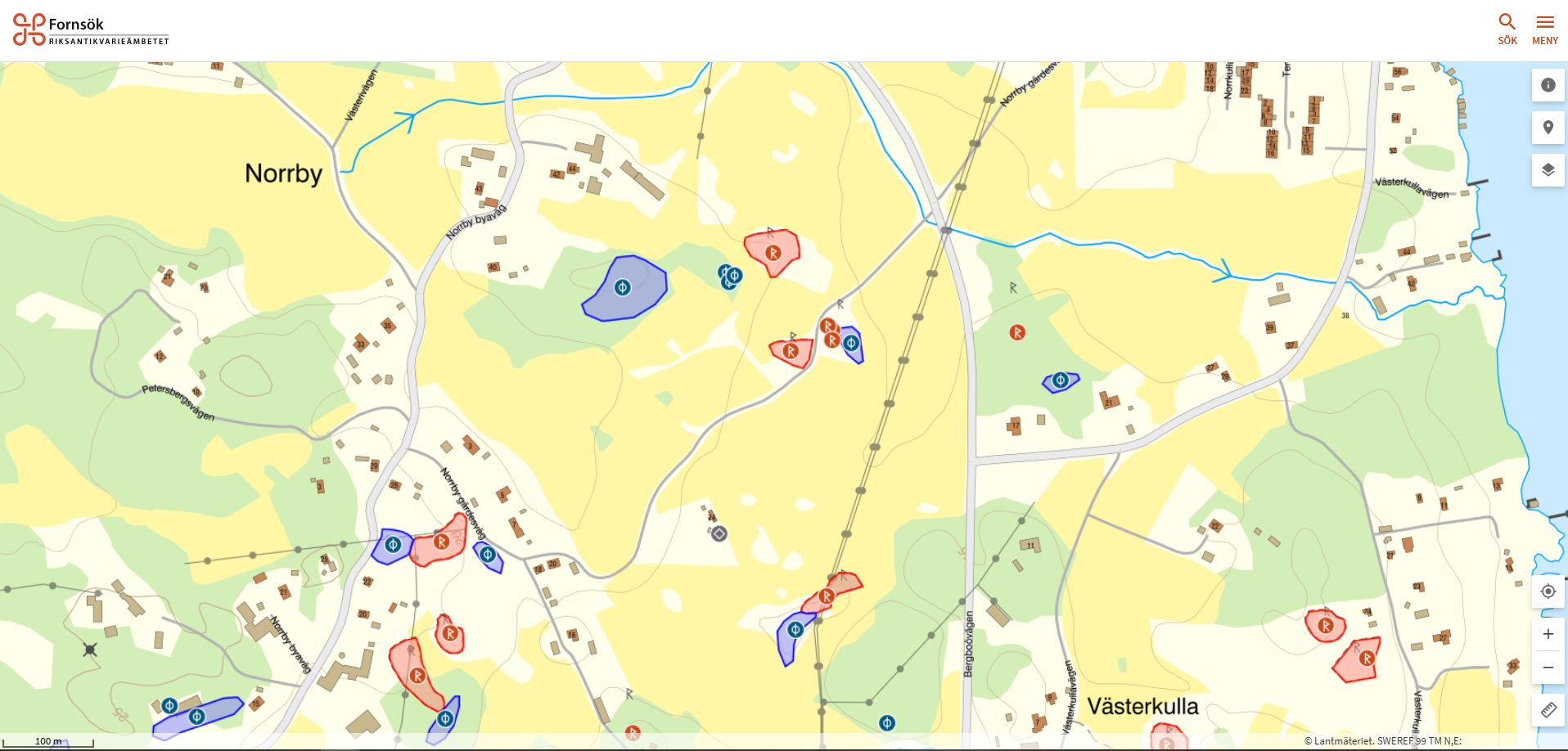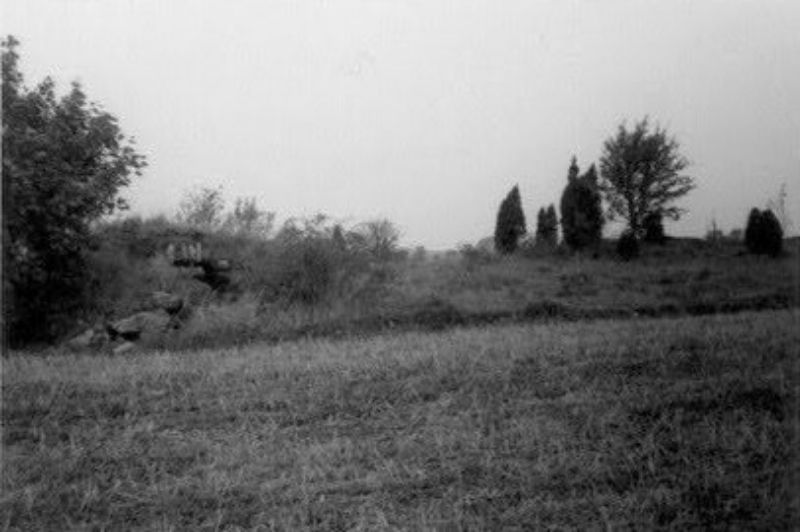
23. Ancient remains
The settlements in Bergby and Norrby date back a long time, probably from the Iron Age (500 BC – 1050 AD). During this period, the land rose, new lands and islands rose from the sea. The shoreline was then 5–15 meters higher than today. The first settlers were probably a combination of fishermen, hunters and small farmers, who lived close to nature’s resources. The area bears abundant historical traces in the form of burial mounds and stone settings. Several ancient remains in are registered with the Swedish National Heritage Board (RAÄ) and can be viewed on a map via the service fornsök.se. Ancient remains are permanently abandoned remains of human activity and are protected under the Cultural Environment Act. It is prohibited to move, damage or otherwise disturb an ancient remains.
Here at ’Teberget’ there are several ancient remains. The farm, which was located here on the knoll with a view north over the open landscape, was named Teberget (’Teberga’ in the local dialect) after a now-disappeared large elder bush. The houses were demolished in 1912 and the wood was used in the construction of the new house in Västeri (Västerivägen 30, see Söderströms in the book Minnenas resa).
Directly adjacent to the road on the north side is a burial ground with five round stone settings. South of the road are several stone settings and an old house foundation. On a field islet a little north of the road is a burial ground of approximately 60 x 50 meters with about twenty round stone settings, each between 3 and 6 meters in diameter. The ancient remains are partly overgrown and can be difficult to distinguish. The graves have not been archaeologically investigated, so the question is: what secrets are hidden here under the ground?

Extra material

